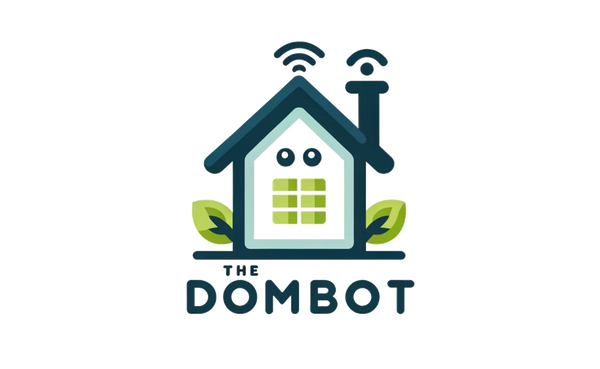Collection: Raspberry Pi: The Perfect Home Assistant Companion
The Raspberry Pi: Your Home Assistant's Best Friend (and Maybe Even Roommate)
Hey there, tech-loving friends! It's your friendly neighborhood smart home guru, back with another installment of "Things That Make Your Home Smarter (and Maybe a Little Less Boring)." Today, we're diving into the world of Raspberry Pis and why they're the ultimate sidekick for your Home Assistant setup.
Now, I know what you're thinking: "Raspberry Pi? Isn't that just a tiny computer for kids who want to learn coding?" Well, yes, it is. But it's also a surprisingly powerful little machine that can turn your home into a tech-savvy wonderland.
Think of it this way: Home Assistant is the brains of your smart home operation, but it needs a body to do all the cool stuff. That's where the Raspberry Pi comes in. It's the perfect hardware companion, offering a surprisingly affordable and versatile platform for running Home Assistant.
Why the Raspberry Pi is the Home Assistant's BFF
- It's ridiculously affordable. Seriously, you can snag a Raspberry Pi for less than the cost of a fancy coffee. That's a steal for a device that can control your entire smart home.
- It's surprisingly powerful. Don't let its size fool you. The Raspberry Pi can handle all the processing power needed to run Home Assistant smoothly, even with a bunch of smart devices connected.
- It's super versatile. You can use the Raspberry Pi for more than just Home Assistant. It can also be used for other fun projects, like building a retro gaming console or a media server.
- It's easy to set up. Even if you're not a tech whiz, you can get a Raspberry Pi up and running with Home Assistant in no time. There are tons of resources and tutorials available online.
The Best Raspberry Pi Models for Home Assistant
Now, you might be wondering, "Which Raspberry Pi model should I get?" Well, it depends on your needs and budget. Here's a quick rundown of the most popular options:
Raspberry Pi 4
This is the latest and greatest Raspberry Pi model, offering the best performance and features. It's a great choice if you want the most powerful and future-proof option.
- Pros: Fast processor, plenty of RAM, supports 4K video output, has a built-in Gigabit Ethernet port.
- Cons: More expensive than older models.
Raspberry Pi 3 B+
This is a solid all-around option that's still very capable. It's a great choice if you're on a budget or don't need the absolute latest and greatest.
- Pros: Affordable, good performance, supports 1080p video output.
- Cons: Not as powerful as the Raspberry Pi 4.
Raspberry Pi Zero W
This is the smallest and most affordable Raspberry Pi model. It's a great choice for budget-minded users or for projects where space is limited.
- Pros: Tiny size, very affordable, has built-in Wi-Fi and Bluetooth.
- Cons: Less powerful than other models, limited storage space.
Getting Started with Home Assistant on a Raspberry Pi
Ready to unleash the power of Home Assistant on your Raspberry Pi? Here's a quick guide to get you started:
- Get your Raspberry Pi and accessories. You'll need a Raspberry Pi, a microSD card (at least 8GB), a power supply, and an HDMI cable (if you want to connect to a monitor).
- Download the Home Assistant operating system. You can find the latest version on the Home Assistant website. https://www.home-assistant.io/installation/raspberrypi/
- Flash the operating system to your microSD card. You can use a tool like Etcher to do this.
- Connect your Raspberry Pi to your network. You can use an Ethernet cable or Wi-Fi.
- Access the Home Assistant web interface. Once your Raspberry Pi is booted up, you can access the Home Assistant web interface by opening a web browser and entering the IP address of your Raspberry Pi.
- Start adding your smart devices. Home Assistant supports a wide range of smart devices, so you can easily integrate your existing devices or add new ones.
Home Assistant Blue, Yellow, and Everything in Between
Now, let's talk about the fun stuff: customizing your Home Assistant setup. You can change the look and feel of your Home Assistant dashboard with themes. There are tons of free themes available online, or you can even create your own.
Want to add a little personality to your smart home? Try out some custom themes like "Home Assistant Blue" or "Home Assistant Yellow." You can even find themes that match your home decor or your favorite sports team.
And don't forget about the endless possibilities for automation! With Home Assistant, you can create custom automations that trigger based on time, location, or even the weather.
The Raspberry Pi: Your Home Assistant's Secret Weapon
So there you have it, folks! The Raspberry Pi is the perfect companion for your Home Assistant setup. It's affordable, powerful, versatile, and easy to use.
With a little bit of effort, you can turn your home into a tech-savvy haven with the help of Home Assistant and your trusty Raspberry Pi. Happy automating!
